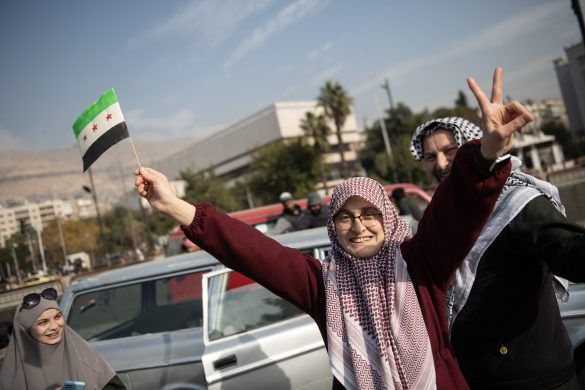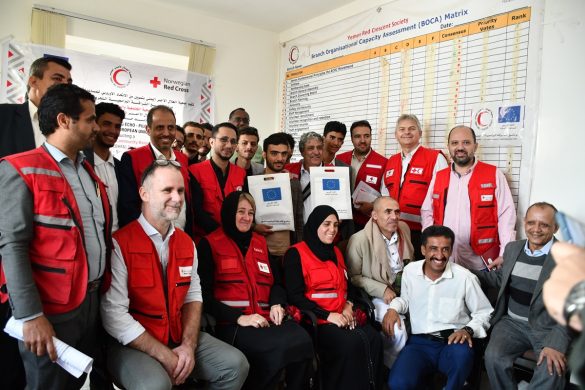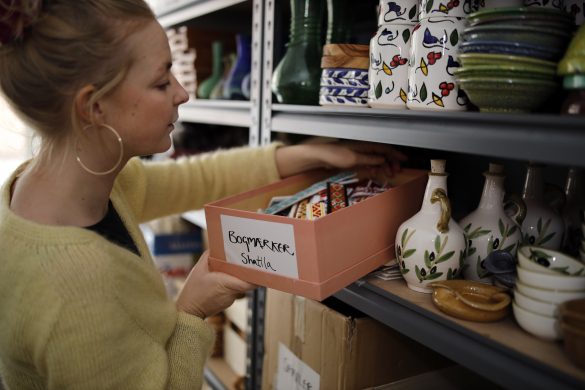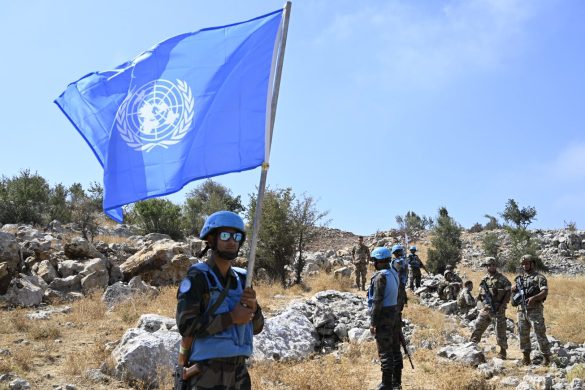Soldater har evakueret skoler efter kritik fra Human Rights Watch, skriver menneskerettigheds-organisationen på sin website torsdag. Hvor mange skolebørn i Yemen, der stadig undervises blandt soldater og ammunition, er uvist.
Imagine sending your children to a school occupied by soldiers. Imagine that the first person they saw at school was a man with a semi-automatic rifle, not their teacher. They would study near stored weapons, ammunition, and even detained prisoners.
You would know that opposing forces might shoot at or bomb the school – now a military target. How could children learn in this atmosphere, and how could they stay safe?
That is what happened in Yemen during the 2011-2012 uprising, putting the lives of tens of thousands of students at risk.
In March, our researchers visited seven Yemeni schools occupied by armed forces on both sides of the fighting. Afterward, we met with government officials and opposition armed groups, voicing the danger this posed to children and their education.
By August, troops had vacated five of the schools we visited.
Yemen already has the lowest literacy rates in the Middle East and some of the lowest school enrollment rates in the world. When soldiers and rebel fighters enter schools, drop-out rates rise – especially for girls, whose parents would rather remove them from school than have them study alongside armed men, or, in Yemen, share temporary classrooms with boys.
Forces on both sides of the uprising, which ended the 33-year rule of President Ali Abdullah Saleh, used schools as barracks, bases, surveillance posts, and firing positions. Some even beat or tortured prisoners on school grounds, according to report, “Classrooms in the Crosshairs.”
“When [the soldiers] tortured the old man here, we got very scared,” said Ahlam, a 13-year-old student at Asma’a girls’ school, which was occupied by soldiers from the rebel First Armored Division. “They beat him [and] electro-shocked him right in the courtyard of the school. It was during recess.”
We also visited schools in Yemen that had been occupied earlier in the uprising – mainly by government soldiers. Many were damaged by bullets or shells.
The moment soldiers enter a school, it becomes a military target and stops being a safe place for students. According to UNICEF, the United Nations children’s agency, armed forces and
armed groups had conducted attacks on at least 82 schools in Sanaa and occupied at least 54 as of November 2011, just before Saleh signed an agreement brokered by the Gulf Coordination Council to leave office.
Not unique to Yemen
This issue is not unique to Yemen – soldiers and armed groups occupy schools around the globe. Of the 72 million primary-school-age children not currently attending school worldwide, more than half — 39 million — live in countries afflicted by armed conflict.
In many of them, armed groups threaten and kill students and teachers and bomb and burn schools as tactics of the conflict. Government security forces use schools as bases for military operations, putting students at risk and further undermining education.
In southern Thailand, separatist insurgents have set fire to schools at least 327 times since 2004, and government security forces occupied at least 79 schools in 2010. Human Rights Watch released a report on soldiers in Thailand’s schools in September 2010, and our advocacy in Thailand continues today. We recently heard reports that many of these soldiers had been ordered out of the schools.
But the problem persists.
Until the Yemeni government – and other governments around the world – prohibit this practice, the lives of students, teachers, and school administrators will remain at risk. Young people, and their future, will continue to be put in harm’s way.














